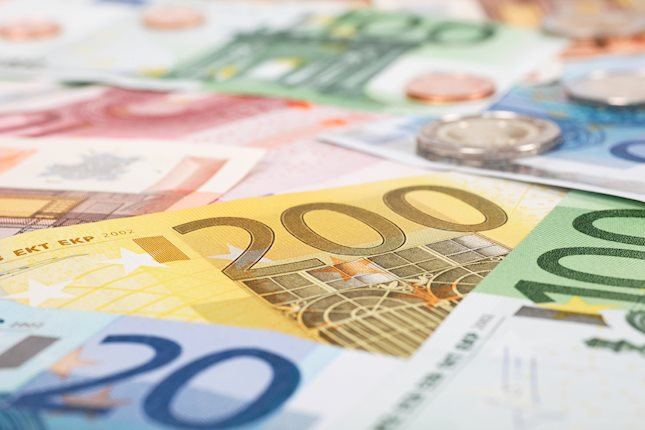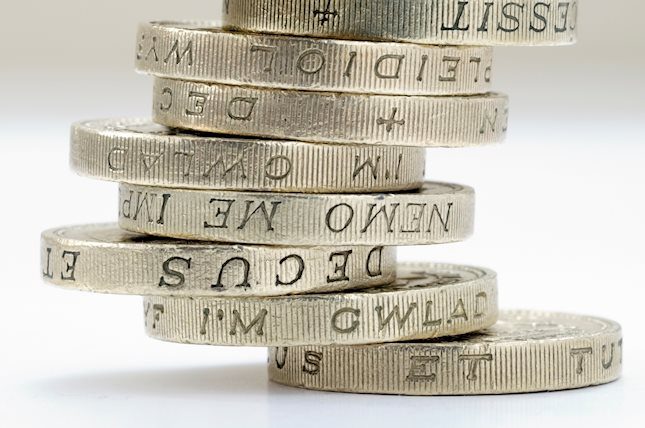Overview: Shortly after the North American markets closed, before any results were known, the market jumped back into the "Trump trade," which it had pared on Tuesday. The dollar and US interest rates soared. The euro is the hardest hit among the G10 currencies today, off about 1.6% and the Canadian dollar, the best performer with about a 0.5% loss. Emerging market currencies have also been sold. The worst performer is the Mexican peso, which is off about 2.7%, followed by Hungary, which is 2.1% lower. There are five four states that have not yet been declared (Nevada, Arizona, Michigan, and Maine). Yet, even if Harris wins in all of them, she will not have enough electoral college votes. However, Trump appears to have carried Pennsylvania, Wisconsin, and Georgia, which he did not in 2020.The Republicans appear to have captured the Senate, while the House is still too close to call.
Equities in Asia Pacific were mixed. The Nikkei rallied 2.6%, but the Hang Seng fell nearly as much. Taiwan rose 0.5% and South Korea fell by as much. Many smaller bourses were weaker. Europe's Stoxx 600 is up a1.45%, which is sustained would be the largest gain in three months. US index futures are sharply higher--the NASDAQ is up 1.8% and the S&P 500 is up 2.3%. European benchmark 10-year yields are mostly 2-3 bp lower, while the 10-year US Treasury yield has soared more than 16 bp to near 4.44%, the highest since late June. The two-year yield is eight basis points higher at 4.26%. Gold settled near $2745 yesterday and was sold to almost $2701 today before recovering back above $2720. December WTI, which has been trending higher for the past five sessions, has been set back today. It settled near $72 and fell to about $70.25. It is back above $71 in European turnover.
Asia Pacific
With market participants keeping an eye on the US electoral results as they roll in, Japan's final services and composite PMI are not sufficient distraction. The final iteration confirmed the first sub-50 composite reading since June, which itself was the first since last November. Tomorrow, Japan reports labor earnings and Australia and China report trade figures. Meanwhile, the pendulum is swinging back to optimism about China as many anticipate the Standing Committee of the National People's Congress to endorse a multiyear fiscal effort. The NPC thrust may have already been articulated: restructure local government debt, stabilization of the housing market, capital injection in banks, and boost domestic demand.
The dollar began rallying before any election results were known. The greenback rallied from JPY151.30 to almost JPY154.40, a new high since late July. Since the high was recorded, the dollar has held above JPY153.70. It is consolidating but looks poised to another leg up with the next target around JPY155.00-20. After stringing together the strongest two-day advance in a month yesterday (~1.2%), the Australian dollar was knocked down nearly 2% to around $0.6515, a three-month low. It rebounded to almost $0.6600 before stalling. The dollar found support against the offshore yuan near CNH7.09 today before surging to around CNH7.1930, its highest level since early August and slightly below the 200-day moving average (~CNH7.1995), which it has not traded above for a little more than three months. The PBOC set the dollar's reference rate at CNY7.0993 (CNY7.1016 yesterday).
Europe
The energy shock has roiled the eurozone's manufacturing sector. Its PMI rose in October to 46 and has not been above 50 since the middle of 2022. The services PMI was revised to 51.6 from 51.2 (51.4 in September) and has not been below 50 since January. The composite PMI moved above 50 in March and slipped back below in September and returned to the threshold in October. The UK reported its October construction PMI slipped to 54.3 from 57.2 in September, which was a two-and-a-half year high. The Bank of England meets tomorrow and is widely expected to deliver a quarter point cut. Sweden's Riksbank will most likely deliver a half-point cut tomorrow, ninety minutes after it reports October CPI. The headline rate is expected to have remained below 2% for third consecutive month. The measure the central bank targets use fixed interest rates, and it is expected to have held below 2% for the fifth month in a row.
The euro extended its recover to almost $1.0940, which is the midpoint of the sell-off from the late September high (slightly north of $1.12) to the October low (~$1.0760). It punched lower to nearly $1.07 today, the lowest level since early July. Since the low was recorded, the euro has held below $1.0780. A retest on the lows in North America looks likely. The year's low was since in mid-April near $1.06. Sterling was bid through $1.30, where it had stalled in recent sessions. Sterling settle above the 20-day moving average for the first time since October 2. It was sold slightly through $1.2850 today but held last Thursday's low (~$1.2845). Since the low was seen, sterling has held below about $1.2925. It too looks poised to retest the lows in North America.
America
The election is the only focus in North America today. The final composite PMI might not be a market-mover even in the best of times. The FOMC meeting gets underway today and the market remains highly confident of a quarter-point cut. The odds of a 25 bp cut in December has been shaved to about a 67% chance from 82% at the end of last week. Canada reports its IVEY survey, but ahead of Friday's jobs report, the market is discounting a little more than a 50% chance of a second half-point cut next month. Mexico reports vehicle production and exports today and CPI tomorrow. Brazil reports its PMI, inflation, and trade balance but the highlight today is the central bank meeting. It is expected to accelerate its tightening cycle. It hiked the Selic by 25 bp in September to 10.75%. Most see it lifting the Selic another 50 bp today. The swaps market discounts another 100 bp of tightening over the next three months.
The US dollar set a two-year high against the Canadian dollar at the end of last week and the greenback settled last week near CAD1.3950. It has pulled back to about CAD1.3820, from returned to the CAD1.3940 area. It is trading near CAD1.3885 in late European morning turnover. Its 0.5% loss puts the Canadian dollar at the top performer in the G10 so far today. The US dollar reached a new two-year high against the Mexican peso yesterday (~MXN20.3560) and reached MXN20.8070 earlier today. It is near MXN20.65 late in the European morning. The US dollar reached a four-year high against the Brazilian real at the end of last week near BRL5.8750. It has unwound some of the gains in the past two sessions and fell to nearly BRL5.74 yesterday. If the greenback gains half as much against the real as it has against the Mexican peso, it would be back above BRL5.81.
Opinions expressed are solely of the author’s, based on current market conditions, and are subject to change without notice. These opinions are not intended to predict or guarantee the future performance of any currencies or markets. This material is for informational purposes only and should not be construed as research or as investment, legal or tax advice, nor should it be considered information sufficient upon which to base an investment decision. Further, this communication should not be deemed as a recommendation to invest or not to invest in any country or to undertake any specific position or transaction in any currency. There are risks associated with foreign currency investing, including but not limited to the use of leverage, which may accelerate the velocity of potential losses. Foreign currencies are subject to rapid price fluctuations due to adverse political, social and economic developments. These risks are greater for currencies in emerging markets than for those in more developed countries. Foreign currency transactions may not be suitable for all investors, depending on their financial sophistication and investment objectives. You should seek the services of an appropriate professional in connection with such matters. The information contained herein has been obtained from sources believed to be reliable, but is not necessarily complete in its accuracy and cannot be guaranteed.
Recommended Content
Editors’ Picks

EUR/USD stabilizes near 1.0550 despite soft German inflation data
EUR/USD fluctuates in a narrow range near 1.0550 in the American session on Thursday. Soft inflation data from Germany makes it difficult for the Euro to gather strength, limiting the pair's upside, while US markets remain closed in observance of the Thanksgiving Day holiday.

GBP/USD trades below 1.2700 on modest USD recovery
GBP/USD struggles to gain traction and moves sideways below 1.2700 on Thursday. The US Dollar corrects higher following Wednesday's sharp decline, not allowing the pair to gain traction. The market action is likely to remain subdued in the American session.

Gold maintains shallow recovery on Fed rate-cut bets
Gold extends its shallow recovery from Tuesday’s lows as it trades in the $2,640s on Thursday. The yellow metal is seeing gains on the back of cementing market bets that the Fed will go ahead and cut US interest rates at its December meeting.

Fantom bulls eye yearly high as BTC rebounds
Fantom (FTM) continued its rally and rallied 8% until Thursday, trading above $1.09 after 43% gains in the previous week. Like FTM, most altcoins have continued the rally as Bitcoin (BTC) recovers from its recent pullback this week.

Eurozone PMI sounds the alarm about growth once more
The composite PMI dropped from 50 to 48.1, once more stressing growth concerns for the eurozone. Hard data has actually come in better than expected recently – so ahead of the December meeting, the ECB has to figure out whether this is the PMI crying wolf or whether it should take this signal seriously. We think it’s the latter.

Best Forex Brokers with Low Spreads
VERIFIED Low spreads are crucial for reducing trading costs. Explore top Forex brokers offering competitive spreads and high leverage. Compare options for EUR/USD, GBP/USD, USD/JPY, and Gold.